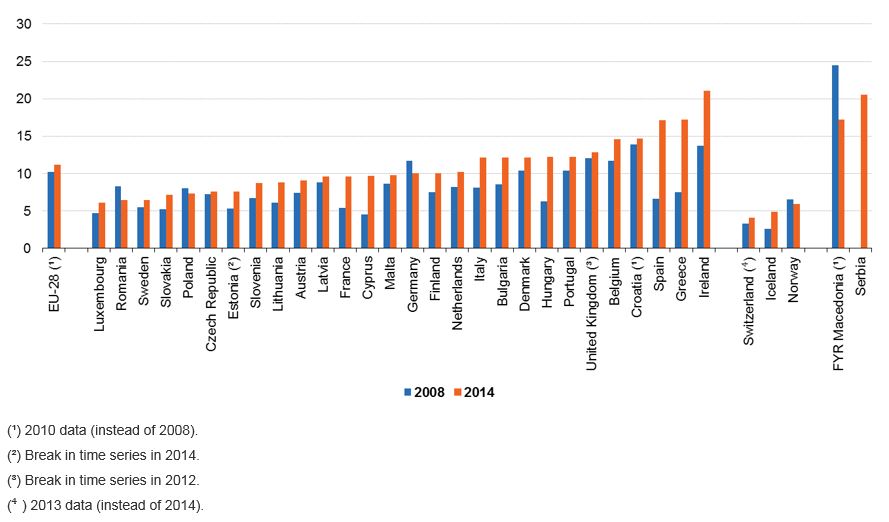Brendan Burgess
Founder
- Messages
- 55,396
Update: I have summarised the results of this thread in a new thread:
Why do more Irish people live in jobless households than in the rest of the EU?
Extract from an article I had in yesterday's Sunday Independent - I have started a new thread on it to try to understand the figures.
http://www.independent.ie/opinion/c...antle-our-culture-of-dependency-34963409.html
In Ireland 77pc of working households are funding the other 23pc - that's twice the average of other EU countries
There is one outstanding statistic about Irish society which is very rarely reported.
Despite having average levels of unemployment, we have the highest percentage of jobless families in the original EU-15 countries, which includes Greece, Spain and Portugal. But it's not just a little more than average, it's twice the average. The average is 11pc but in Ireland, it's 23pc. The next closest to us is the UK at 13pc.
So whereas in other EU countries, 89pc of households work and fund the 11pc who don't work, in Ireland, 77pc of working households are funding the other 23pc who don't work.
Why do more Irish people live in jobless households than in the rest of the EU?
Extract from an article I had in yesterday's Sunday Independent - I have started a new thread on it to try to understand the figures.
http://www.independent.ie/opinion/c...antle-our-culture-of-dependency-34963409.html
In Ireland 77pc of working households are funding the other 23pc - that's twice the average of other EU countries
There is one outstanding statistic about Irish society which is very rarely reported.
Despite having average levels of unemployment, we have the highest percentage of jobless families in the original EU-15 countries, which includes Greece, Spain and Portugal. But it's not just a little more than average, it's twice the average. The average is 11pc but in Ireland, it's 23pc. The next closest to us is the UK at 13pc.
So whereas in other EU countries, 89pc of households work and fund the 11pc who don't work, in Ireland, 77pc of working households are funding the other 23pc who don't work.
Last edited:



